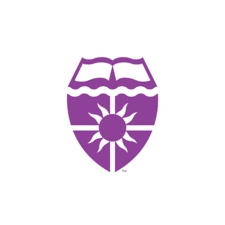
2115 Summit Avenue
St. Paul, MN 55105-1096
United States
About
We are ranked as a "Top National University" and "Best Value School" by U.S. News & World Report, are in the top 20 in The Princeton Review's list of "Undergraduate Entrepreneurship Programs", thanks to the Schulze School of Entrepreneurship, and when it comes to sustainability, The Princeton Review ranks St. Thomas in the Top 50 Green Colleges in America. St. Thomas infuses sustainability into every aspect of campus life, from academic programs and student activities to facilities and dining operations. We are working as a community toward a goal of carbon neutrality by 2035.
Our founding was inspired by Catholic intellectual tradition, a 2,000-year-old practice of uniting faith and reason to explore the world. Rooted in this Catholic identity, we are committed to embedding a shared sense of belonging where all feel welcomed; our convictions call us to protect and enhance the dignity of every human and to work for a more just and equitable society. At the University of St. Thomas, we develop future leaders of all faiths looking to make a positive impact on the world.
We are the only academic institution in Minnesota to be designated a “Changemaker Campus,” meaning social innovation, entrepreneurship and caring for the common good are built into everything we do. Our three campuses in St. Paul, downtown Minneapolis and Rome, Italy, offer unique learning and living opportunities.
Cost
This is the average annual amount that first-time, full-time undergraduate students pay at this institution after subtracting all grants and scholarships from the cost of attendance.
Show Net Price details
This net price data shows the average amount students have paid, according to their family income, after subtracting all grants and scholarships.
College Profile
Show Undergraduate Student Body details
Student Success
Show Graduation Rate 4-yr Institution details
Show Retention Rate details
Campus Settings
Financial Aid
The following information pertains to first-time full-time undergraduate students.
Show Financial Aid details
Cumulative Debt
This section shows the median debt graduates incurred to complete their degree at this institution.
- Associate's Degree: $6,500
- Bachelor's Degree: $27,000
- First Professional Degree: $61,500
- Graduate Certificate: $15,698
- Master's Degree: $34,142
- Doctorate: $67,535
- Associate's Degree: 650,000%
- Bachelor's Degree: 58%
- First Professional Degree: 74%
- Graduate Certificate: 27%
- Master's Degree: 44%
- Doctorate: 76%
Admission Information
- Common applications (online)
- School applications (online)
- High School Diploma or GED
- Transcripts
- Accepts dual credits
- Accepts exam-based credits
- Institution awards credits for military training
Financial Aid Application Deadline
There is no financial aid application deadline date, however, students should apply for financial aid when the FAFSA becomes available for the upcoming academic year which is October 1, with the greatest access to funding when completed by April 15. Students may also complete the MN Dream Act Application.
Regular Decision Deadline
January 15 After January 15, applications reviewed on a rolling basis
Early Action Deadline
November 1

